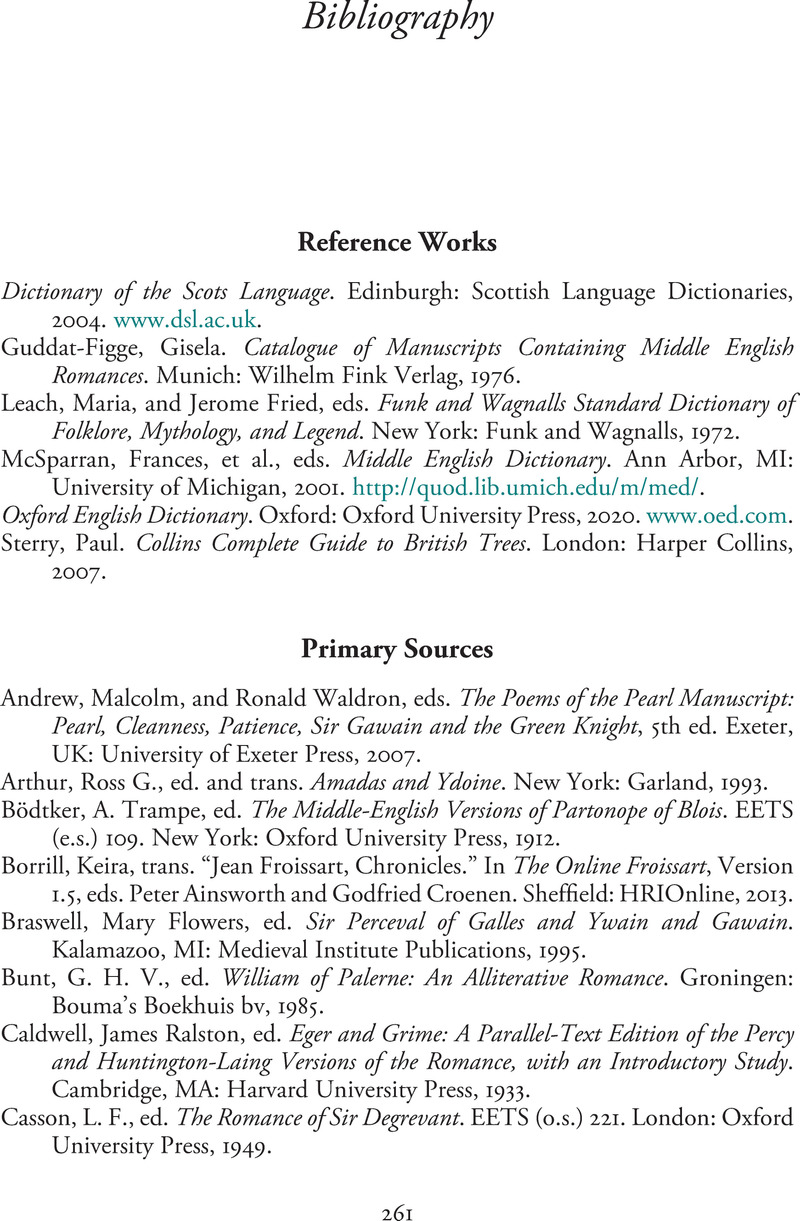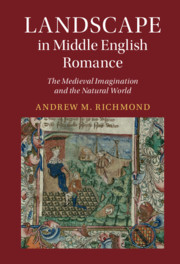Book contents
- Landscape in Middle English Romance
- Cambridge Studies in Medieval Literature
- Landscape in Middle English Romance
- Copyright page
- Contents
- Acknowledgments
- Note on Copyright
- Abbreviations
- Digging into Romance
- Chapter 1 A (Disappearing?) World of Opportunity
- Chapter 2 Chasing the Surf
- Chapter 3 Across the Sea
- Chapter 4 “In His Contrie at Hame”
- Conclusion
- Notes
- Bibliography
- Index
- Cambridge Studies in Medieval Literature
- References
Bibliography
Published online by Cambridge University Press: 06 August 2021
- Landscape in Middle English Romance
- Cambridge Studies in Medieval Literature
- Landscape in Middle English Romance
- Copyright page
- Contents
- Acknowledgments
- Note on Copyright
- Abbreviations
- Digging into Romance
- Chapter 1 A (Disappearing?) World of Opportunity
- Chapter 2 Chasing the Surf
- Chapter 3 Across the Sea
- Chapter 4 “In His Contrie at Hame”
- Conclusion
- Notes
- Bibliography
- Index
- Cambridge Studies in Medieval Literature
- References
Summary

- Type
- Chapter
- Information
- Landscape in Middle English RomanceThe Medieval Imagination and the Natural World, pp. 261 - 283Publisher: Cambridge University PressPrint publication year: 2021



